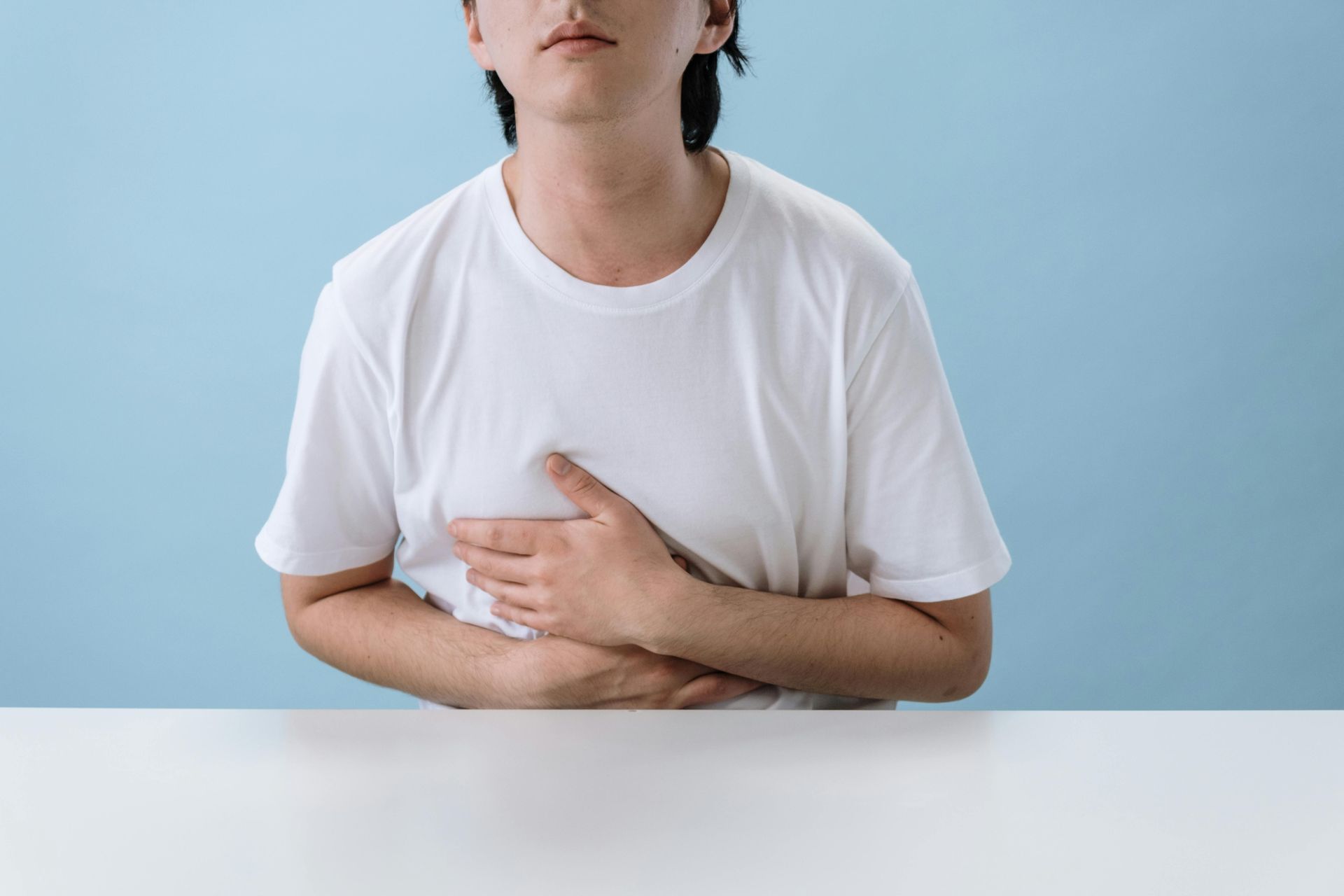What Really Happens When Your Gallbladder Is Congested — And What If It Gets Removed?
Gallbladder unacknowledged digestive issues

As a dietitian and somatic therapist, I see gallbladder congestion far more often than people realise. Learn the signs, the ripple effects, and what happens if you’ve had yours removed.
Let’s talk about something that rarely gets mentioned until it’s screaming for your attention — your gallbladder.
This small organ plays a big role in how you digest fat, detoxify, and even how you feel in your body. When it’s not working properly (aka congested, sluggish, or full of sludge), you can feel tired, heavy, bloated, nauseous — and maybe even be told you need to have it removed.
Here’s what’s actually going on when your gallbladder is congested — and what I want you to know if yours has already been taken out.
What Does a Congested Gallbladder Mean?
Your gallbladder stores and releases bile, a substance made by your liver to help you break down fats, absorb fat-soluble nutrients (like vitamins A, D, E and K), and eliminate toxins. When the bile gets too thick, stagnant, or sludgy, it stops flowing freely — and that’s when things start going wrong.
WHAT CAUSES GALLBLADDER CONGESTION?
So why does bile slow down or thicken in the first place?
- Processed food and refined oils
- Low stomach acid or poor chewing
- Stress (yes, stress slows bile release!)
- Hormonal imbalance — especially oestrogen dominance
- Skipping meals or extreme fasting
- A history of dieting, gallstones, or yo-yo eating
- Some medications (like birth control or cholesterol meds)
Signs Your Gallbladder Is Struggling
These are the symptoms I see all the time in clinic that point to gallbladder congestion:
- Bloating (especially after rich or fatty meals)
- Nausea or queasiness
- Pain or tension under your right ribs or shoulder blade
- Constipation or pale, floaty stools
- Burping, reflux, or food just sitting in your gut
- Hormonal imbalances or PMS that feel worse after eating
- Random weight gain or inability to lose belly fat
- Lipomas (benign fatty lumps that often pop up with sluggish bile)
If you’re nodding along — your body is trying to tell you something. it’s backed up.
Why Bile Flow Actually Matters (So Much More Than Fat Digestion).
Bile is not just about digesting fat. It's essential for:
- Absorbing fat-soluble vitamins (A, D, E, K)
- Detoxifying the liver and binding waste
- Regulating gut bacteria (bile salts have antimicrobial effects)
- Balancing cholesterol and breaking down excess hormones like oestrogen
When bile becomes thick or stagnant, it leads to what's known as biliary stasis—a key contributor to gut dysbiosis, toxicity, and hormonal imbalance.
WHat happens if you have a sluggish gallbladder?
Reduced bile flow (also known as biliary insufficiency or bile stasis) can have a significant impact on your gut microbiome and overall digestive health. Here's how:
1. Impaired Fat Digestion
- Bile emulsifies dietary fats so enzymes can break them down.
- Without adequate bile, fats are poorly digested, leading to greasy stools, bloating, and discomfort.
- Undigested fat becomes fuel for opportunistic microbes like Clostridium and Bacteroides, shifting microbial balance.
2. Reduced Antimicrobial Action
- Bile salts are naturally antimicrobial — they keep pathogenic bacteria, yeasts (e.g. Candida), and parasites in check.
- Low bile flow reduces this protective effect, leading to overgrowth of gram-negative bacteria, and possibly SIBO (small intestinal bacterial overgrowth).
3. Disrupted Gut Motility
- Bile helps stimulate peristalsis (the wave-like motion of digestion).
- Less bile = slower transit time → constipation or fermentation, giving pathogens more time to grow.
4. pH Imbalance
- Bile is alkaline and helps neutralise stomach acid as food enters the small intestine.
- If bile is low, the environment stays too acidic, affecting microbiota in the upper small intestine and damaging mucosal lining, increasing permeability.
5. Dysbiosis Cascade
Low bile →
↓ Fat digestion + ↓ motility + ↓ antimicrobial activity →
↑ Inflammation + ↑ endotoxin-producing bacteria →
↑ Leaky gut, SIBO, immune activation, and metabolic and hormonal dysfunction
What Happens When the Gallbladder Gets Removed?
If you’ve already had your gallbladder taken out — or you’ve been told you might need to — here’s what actually happens:
After a cholecystectomy (gallbladder removal), your bile no longer gets stored and released on demand. Instead, it drips continuously into your gut — which often causes:
- Diarrhoea or urgent stools after eating
- Poor fat digestion and fat-soluble vitamin deficiencies
- Increased inflammation and toxin recirculation
- Gut microbiome shifts (like dysbiosis or IBS symptoms)
Many people don’t feel better after surgery. That’s because the gallbladder wasn’t the root issue — the whole system needed support.
How I Support Gallbladder Health (With or Without It)
Whether your gallbladder is still hanging in there or it’s already gone, we can still work on restoring flow. In my practice, I use:
- Bitters before meals (gentian, dandelion, artichoke) to get bile moving
- Taurine + glycine (key amino acids to help thin bile)
- Phosphatidylcholine to improve bile quality
- Castor oil packs to reduce congestion and inflammation
- Magnesium, digestive enzymes, and liver-supporting herbs like milk thistle
- Fibre (hello flax and psyllium husk) to sweep toxins out once bile does its job
And always — we work on nervous system regulation. Because when your body is stuck in survival mode, digestion slows down, detox slows down, and you stay stuck.
Final Thoughts
Gallbladder congestion is one of those things that creeps up silently but can cause huge ripple effects — from your gut to your hormones to your energy. Whether you’re trying to avoid surgery or you’ve already had it removed, your body can absolutely be supported back into balance.
The key is knowing how.
If you’re struggling with these symptoms and want to feel clear, energised, and grounded in your body again — I’m here. This is what I do.
👉 Book a session with me and let’s restore digestive and wellbeing flow.




